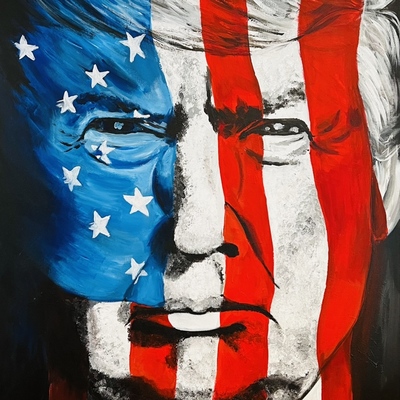
Trump Administration Partners with Pfizer to Launch Federal Website Selling Discounted Drugs Directly to Consumers Without Insurance
White House Strikes Direct Drug Deal With Pfizer, Skirting Traditional Healthcare Channels
Trump Administration Bets on a Consumer Portal to Shake Up Drug Pricing
President Trump unveiled a deal on Tuesday with pharmaceutical giant Pfizer that aims to deliver discounted drugs directly to Americans—no insurance companies, no pharmacy middlemen. The plan, set to roll out in 2026 through a federal website called TrumpRx.gov, promises big savings for patients willing to pay cash.
Rather than reshaping the system through new laws, the administration cut a direct bargain. Pfizer agreed to peg Medicaid drug prices to those paid overseas and to give patients an average 50% discount when they buy medications through manufacturer websites connected to the government portal.
Standing in the White House with Health Secretary Robert F. Kennedy Jr. and Pfizer CEO Albert Bourla, Trump didn’t mince words: “American consumers have been footing the bill for the world’s drug research. That’s over. It’s been changed.”
For decades, Americans have paid the highest prescription drug prices on the planet. Politicians railed against it, but reforms never seemed to stick. Trump’s team decided to sidestep Congress entirely, leaning instead on trade talks and tariffs to wrest concessions from drugmakers.

Who Actually Gets Access?
The portal’s reach may be narrower than the fanfare suggests. Only uninsured patients—or those who willingly bypass their insurance—can use TrumpRx. That rules out the vast majority of Americans, most of whom rely on employer or government insurance. Discounts also can’t be combined with coverage, which leaves many wondering if the program will really move the needle beyond the country’s 26 million uninsured.
Critics warn the savings may not be as sweet as advertised. “If the so-called 50% discount is tied to inflated list prices, patients may not actually do better than what they’re already getting through their insurance,” one analyst cautioned.
Pfizer hasn’t helped ease concerns. Its announcement left many blanks unfilled: Which drugs are covered? How do these discounts compare with existing patient-assistance programs? And will Medicaid actually save money once its current rebates are factored in?
A Threat to the Middlemen
Beyond the politics, the deal shifts the balance of power in the drug supply chain. By funneling patients to company-run storefronts, TrumpRx undercuts pharmacy benefit managers —the behind-the-scenes brokers who negotiate rebates and decide which drugs make it onto insurance formularies.
PBMs have long been criticized for murky pricing and incentives that sometimes leave patients paying more. Even if only a fraction of patients buy directly from manufacturers, it chips away at the PBMs’ business model. More importantly, the precedent matters: once the federal government runs a drug portal, expanding it to insured patients—or tying it to Medicare pricing—becomes a real possibility.
So far, investors aren’t panicking. PBM stocks held steady after the announcement, suggesting Wall Street doesn’t expect a quick upheaval. Entrepreneur Mark Cuban, who runs his own discount drug business, gave the plan a lukewarm “B.” “It could work if it pressures PBMs to clean up their act,” he said, but added that the market clearly sees limited disruption for now.
Drug Prices Meet Trade Policy
Behind the consumer-friendly slogans lies a more strategic play. Pfizer reportedly secured a three-year exemption from import tariffs on its drugs—part of a broader White House push to tie lower drug prices to promises of U.S.-based manufacturing. Similar deals with other companies may soon follow.
This blurring of lines between healthcare and industrial policy carries risks. If Washington leans on allies to raise their own drug prices to level the playing field, trade disputes could flare, straining international partnerships. Still, the administration is betting that corporate pledges to “invest at home” will soften political resistance.
At the press event, Kennedy praised Bourla for showing “corporate responsibility,” though industry insiders note tariff pressure likely drove the deal as much as goodwill.
Wall Street’s Take
For investors, the math is complicated but not catastrophic. Medicaid accounts for only a sliver of big drugmakers’ revenues, and it already comes with steep rebates. Tying some prices to international levels may pinch margins, but it won’t sink the industry.
The bigger prize may be the chance to collect valuable consumer data. By selling directly to patients, drugmakers gain insights into buying habits, medication adherence, and loyalty—data they’ve never fully controlled under the old distribution model. In the long run, that information may be worth more than the short-term price cuts.
Analysts are watching three things closely:
- Whether rival companies strike copycat deals, validating the model.
- How federal agencies calculate rebates under this new setup.
- What state Medicaid budgets reveal once the program goes live.
Looking Ahead
For the pharmaceutical industry, this is less of a final answer and more of an opening gambit. If the model spreads and competitors sign on, PBMs could face long-term erosion. If the program fizzles, it may be remembered as a flashy but limited side project.
For patients, the big question is simple: will drugs actually cost less at the counter than they do today? Until the portal launches and real-world comparisons come in, no one can say for sure.
Right now, TrumpRx looks like the first move in a long chess game between government, Big Pharma, and the healthcare system’s entrenched middlemen. Whether it changes the way Americans pay for medicine—or fades into another forgotten pilot project—depends on details still locked behind closed doors.